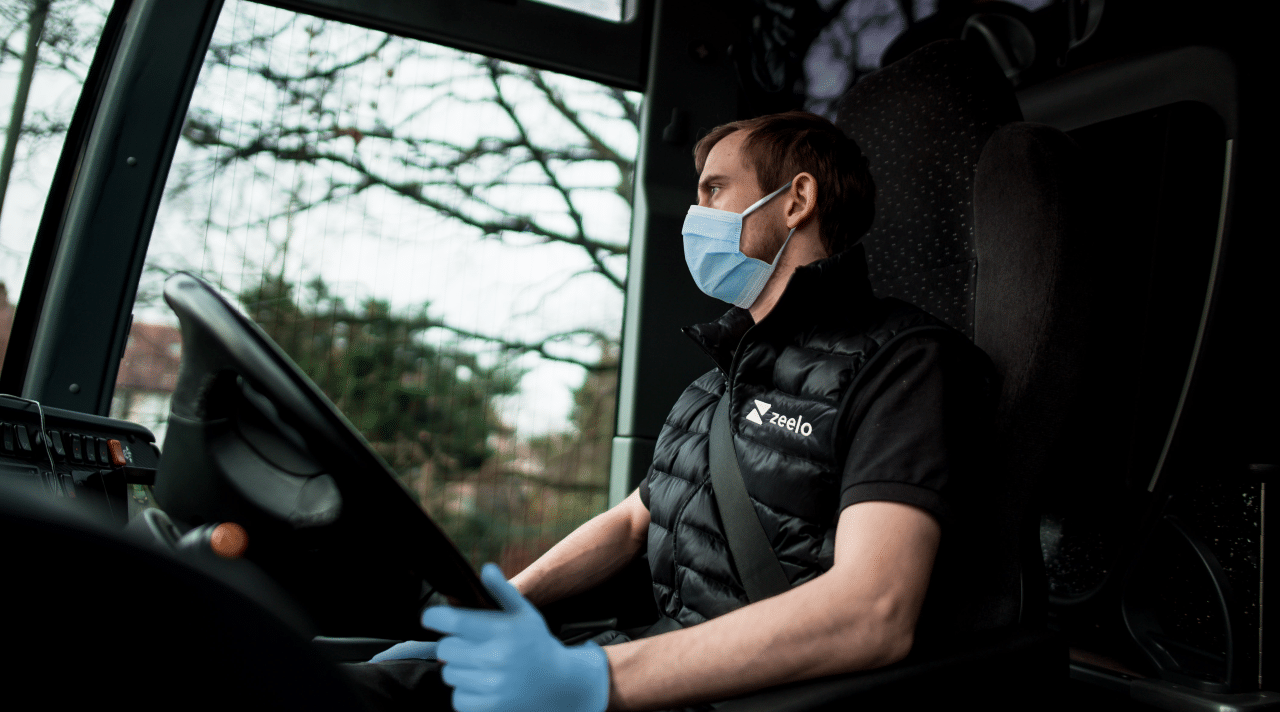We visit Exeter and Plymouth to discover what makes these lovely holiday cities so special

A British city centre is a fine place, full of recognised names and trusted brands for shopping and dining, but it’s those often overlooked off-the-beaten-track little hubs that make a city unique.
To get the true essence of either Exeter or Plymouth, you should encourage your groups to visit the Quay in the former and the Barbican in the latter. Both areas have cobbled streets and a wealth of shopping, drinking and dining, as well as museums and small attractions. It’s the history and atmosphere in these two waterside areas that make the Devon cities very special.
Combine a trip to the Quay or the Barbican with any of the area’s other excellent local attractions, and you’ve got an exciting, cosmopolitan coach tour in the offing.
For help planning a group break in either Plymouth or Exeter, contact Anne Blackham at Devon’s Top Attractions.
Anne kindly arranged an exclusive fam trip for Group Tourism & Travel to experience the delights of Devon’s finest.
Exeter’s cathedral
Our first port of call was Exeter Cathedral, the stunning landmark at the heart of the city.

Private guided tours are available to groups, and they can be adapted to suit the group's interests. Blitz tours are particularly popular, as the cathedral was bombed in 1942.
But like most medieval cathedrals, Exeter's has a wealth of little stories dating from all periods of its near-1,000-year history. The present cathedral is the third on the site, and was completed in the 15th century. It has many talking points, including the oldest complete misericords in the country, one of only four astronomical clocks in the country that shows the phases of the moon and the earth's orbit around the sun, and the UK's tallest bishop's throne.
Look out also for the restored St James’ Chapel, with its links to post-war rugby and the story of the builder's cat. There are other animals associated with the cathedral – rats, owls and elephants, all with fascinating stories. Charles I's youngest child Henrietta was born in Exeter before her father lost his head, and was baptised in the cathedral. You can also hear why the cathedral was split into two after the Reformation with a new entrance created at the back. It's not a building, it's a trove of fascinating stories, all well told by enthusiastic guides.
A mighty museum
From Exeter’s best-known attraction, we went to one of its lesser-known gems, the Royal Albert Memorial Museum and Art Gallery (RAMM) in Queen Street. Built to commemorate the death of Queen Victoria’s beloved Prince Albert, it’s a fine Victorian edifice with over one million items in its vast and fascinating collection, leading to its tagline, “home to a million thoughts”.

Currently it’s holding an exhibition on Sea Life, based on the work of the Victorian naturalist Gosse, father of the modern aquarium. Fine examples of art and design based on sea life are on display, including intricate glass models of sea creatures that were made for study.
But the rest of the museum is just as fascinating, with exhibitions on Devon life through the ages, bird and insect species, and African mammals using incredible examples of Victorian taxidermy – including a giraffe and an elephant.
The art gallery shows scenes of Devon and connected to Devon, with a focus on the natural world, and there’s also a rooftop terrace where you can view the Roman walls nearby.
The museum is very keen to attract groups. There’s a large space outside the Pantry café that can be used for group dining and events, and the adjacent garden is ideal for group picnics on fine days. There’s also a newly-revamped shop with quality gifts for sale. Coaches can drop off on Queen Street just outside.
Into the waters
One of Plymouth’s landmarks is the National Marine Aquarium, built in 1998 with backing from the Marine Biological Association and dedicated from the start to conservation.

It’s no mere zoo for sea creatures; like the Deep in Hull, it has a strong focus on marine science and animal welfare. A new tour is launching this year that will give visitors an idea of how much goes on behind the scenes to look after 4,000 animals.
The VIP Behind the Scenes tour shows you how the vast tanks are cleaned, how the sharks and rays are fed, and how surgery is performed on the animals. “People don’t usually see about 52% of the building,” says Josh McCarty, Head of Marketing.
He gave us a taste by leading us to the top of the building, where you can peer directly into the UK’s biggest aquarium tank from above. Immediately, a shark swims over, grinning at us with surprisingly white teeth. “He’s come over here just to have a look at us,” says Josh. The intelligence of the animals and their behaviour is what makes the place amazing.
The first zone of the building is Plymouth Sound, which gives you a closer look at the creatures inhabiting the waters just outside the windows of the aquarium.
The next zone is the Eddystone exhibit, which examines deeper waters and the UK's fishing industry based on the Eddystone Reef 19km off Plymouth.
The Atlantic Ocean exhibit is where our grinning shark lives, with countless other large sharks, rays and mighty fish in a massive 2,000,000-litre tank. You might be interested to see the animals weaving in and out and around a Second World War Walrus Seaplane – it’s a life-size replica, donated by the RAF.
There’s a second very large tank: The Great Barrier Reef exhibit is 700,000 litres, and home to 70 species, including zebra sharks and a loggerhead turtle.
Other exhibits include the Biozone with many colourful clownfish, seahorses, coral and an octopus; and several species of jellyfish.
Naturally it’s very popular with children, but wholly suited to adult groups too. Research has found out that watching an aquarium is very therapeutic, and it does have a very calming atmosphere. There are plenty of places to sit and rest – not least a mini-cinema showing films about the aquarium’s conservation work – and there’s a large pleasant function room that groups can use.

Group packages include the option for a welcome tea/coffee and hosted tour for £13pp, and an additional private cream tea for £17.50pp.
History steeped in gin
The aquarium is just a pleasant stroll across the footbridge to Plymouth’s famous Barbican, the wonderful historic harbourside of cobbled streets and Georgian merchant’s houses, where it’s easy to imagine the Pilgrim Fathers setting off on the Mayflower to the New World.
The Barbican is home to the Blackfriars Distillery, where Plymouth Gin has been made for centuries in a 16th-century building, which used to be part of a monastery. Even the traditional green glass bottle is steeped in history, from the picture of the Mayflower on the logo to the copper lid symbolising the old still.
We were given the 40-minute distillery tour by an enthusiastic, professional guide, who delivered a whistle-stop history before taking us into the atmospheric, ancient still room, where 22,000 litres of Plymouth Gin are made every week in the enormous Victorian copper still. One man presides over the still, ensuring that the levels are correct just by giving the gin a skilled sniff.
Then, in another room, we take in the aroma of the various ingredients used for making Plymouth Gin, from juniper berries to citrus fruits, and sample the finished gin and sloe gin.
The tour price includes a free G&T in the cosy Refectory Bar, or a miniature to take home, and there is, of course, a well-stocked shop.
Steam along the Dart
Our tour also took us to some of the delights of Dartmoor roughly halfway between Exeter and Plymouth, starting with the South Devon Railway.

The railway between Buckfastleigh and Totnes originally opened in 1872 and extended to Ashburton, but never made a profit, and was closed to passengers in 1958. It reopened in 1969 as a tourist line, the earliest in the south west to do so, shortly before the Buckfastleigh-Ashburton section was lost to the A38.
Today the railway is gearing up for its 50th anniversary as an attraction in 2019, and is concentrating on its significant groups business: It doubled its coach bookings in 2016, but there’s always room for more. A one-way or round trip on the railway can be combined with several other attractions, including Stuart Line Cruises, Buckfast Abbey and nearby National Trust properties.
It’s a very pleasant ride: The round trip is an hour-long visit along the lovely river Dart, where your group might well see flashes of kingfisher blue as well as other wildlife, such as deer. Photo opportunities at the stations of the trains themselves are myriad, and the coaches range from traditional compartments to 1930s Art Deco charm.
The station at Totnes is interesting because it didn’t used to be there: Its station buildings have all been taken from other railways and re-erected here.
There’s a fascinating little museum at Buckfastleigh station, housing the last surviving broad gauge locomotive, which was built in Plymouth.
Coaches can park for free near the platform at Buckfastleigh, and free fams are available for group tour organisers.
Buckfast’s surprises
A couple of minutes’ drive from the station at Buckfastleigh is Buckfast Abbey, perhaps best known as the home of Buckfast tonic wine, but an excellent attraction in its own right.

It’s the home of the Benedictine monks who discovered the foundations of Buckfast Abbey, lost after the Dissolution, in the 1880s and, incredibly, re-built it themselves.
Today it’s an active working monastery. It brings history into the present, making it very easy to imagine how any medieval cathedral that started out as a monastery would have been like. Monks and nuns wander the grounds, attend services in the abbey, tend to the gardens, and produce goods for sale in the shop. It’s a busy hive of activity – a marked contrast to the silence and stillness that surround many abbey ruins in the UK today.
Next year is the perfect time to visit, as Buckfast Abbey will be celebrating its 1,000th anniversary, and work is currently going on around the site in preparation. It’s a free attraction, with peaceful gardens including a modern sensory garden, and the abbey church itself is well worth a wander. The stained glass on the west face is particularly worth seeing – it’s simply beautiful.
Buckfast has hotel and conference facilities to complement “the Benedictine mantra of hospitality,” as the abbey’s Geoff Pring says, and there’s also a very good café and the aforementioned shop, which offers produce from other monasteries across Europe.
Cuddling baby animals
Our next port of call was Pennywell Farm, highly recommended for any kind of melancholy or stress – who wouldn’t feel better after cuddling a small animal?

The farm is known for its miniature pigs, which you can have a good cuddle with – there’s a simple technique to holding them, and they’re perfectly happy to snuggle up to you. The goats are as good, if not better. You walk into the goats’ enclosure in spring and a dozen or so kids (the goat kind) run over happily to see you. You can cuddle them as well. The Angora goats are especially soft, naturally.
The staff are really lovely too – on our visit, the director Chris, who greeted every animal he saw with familial joy, was very good at encouraging visitors to stop being shy and hold an animal. Three teenage girls from the University of Exeter were soon photographed together cuddling a kid each, looking delighted.
Feedings, ‘miniature pig racing’ and other events are going on throughout the day, and there’s a café offering cream teas for groups.


























